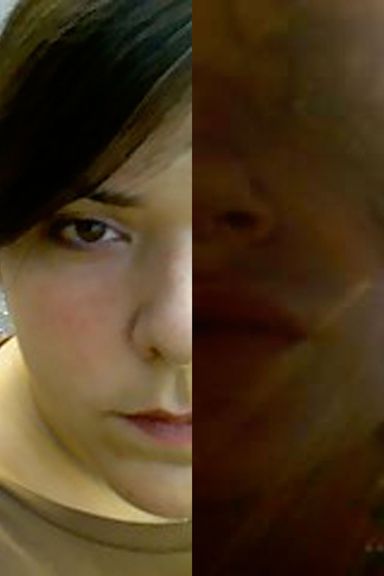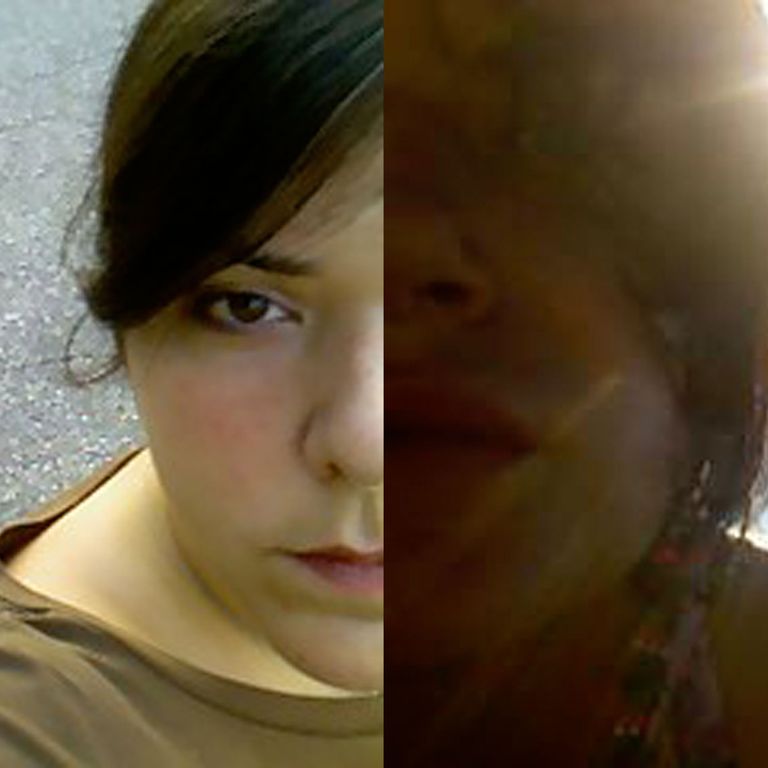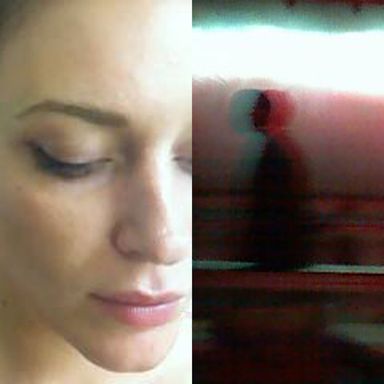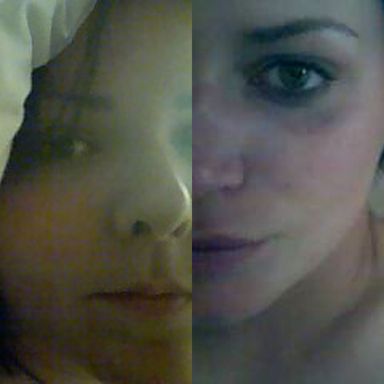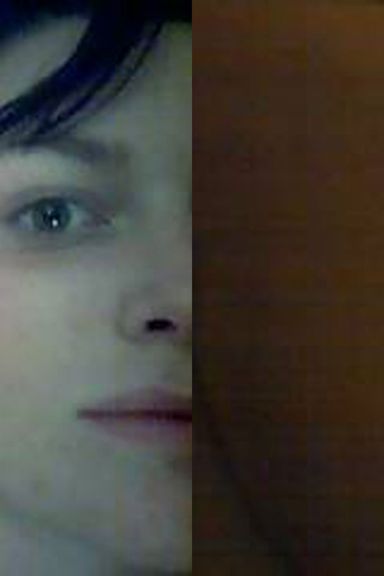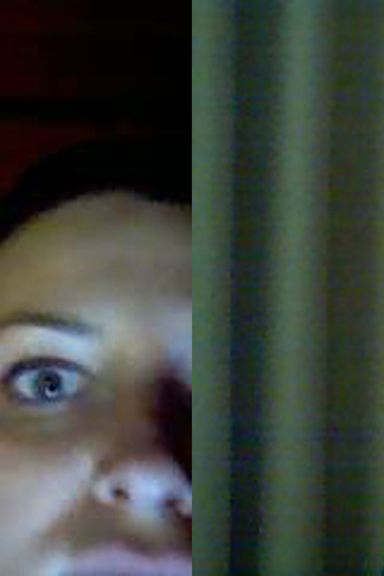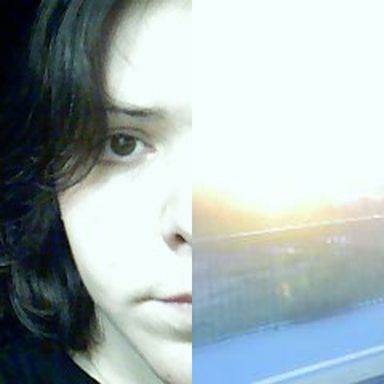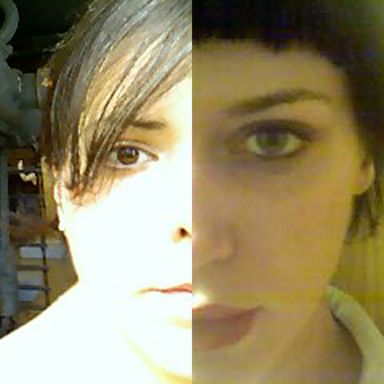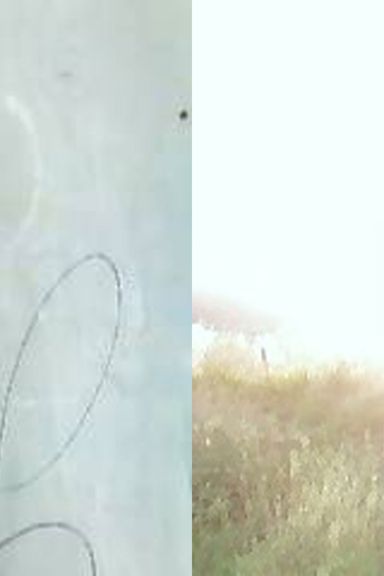The Two Friends Who Shared Selfies Every Day for a Year
This week the Cut explores the messy, loving, spiteful, supportive, competitive, joyful, and funny sides of friendship.
In early 2006, Anne Massoni and Chelsy Usher had both recently moved to Chestertown, Maryland, when they found themselves living in adjacent apartments. Neither of them knew many people in town: Massoni had moved home to help her mother recover from a double mastectomy, but had fallen out of touch with her high-school friends; Usher had moved there for a love interest. According to Massoni, their friendship developed very quickly: “It was a very fast, quick ignite of friendship,” she told the Cut. “I think we both sensed that we were artistically minded.”
The two friends only ended up living in the same place for six months: Massoni took a teaching position in Memphis, and Usher relocated to San Diego to join the Coast Guard. “We left with this parting commitment to find a way to stay in touch through unconventional means,” Massoni remembers, “whether it was through handmade postcards, or random art projects that could be delivered in the mail. Neither one of us was particularly invested in phone calls or long, drawn-out emails, so we had said, it’ll either be visual or it won’t happen.”
One night, Massoni and Usher spontaneously exchanged selfies from bed, which later became a photography project they’ve titled Yours and Mine: a compilation of 1,630 selfies, which the friends have sent back and forth to each other on their Motorola Razrs over the course of a year. Starting that October, the two friends agreed to send each other at least one selfie every day. It could be taken anywhere, at any time, and they could send more than one in a day — but they agreed that once they took a photo, they had to send it without hesitation. Apart from one face-to-face visit, Massoni and Usher communicated exclusively through snapshots of themselves for the next 12 months — they didn’t talk, text, or exchange words at all. Massoni has since arranged all of the photographs into a 50-foot-long grid, and also displays them in diptychs (which combine the two faces and backgrounds into one) that she’s exhibited at various galleries across the country.
The Cut spoke with Massoni about the evolution of the project and what it was like, pre-Facebook and Instagram, to keep in touch with a close friend through purely visual means.
What was your friendship with Chelsy like when you first met?
She is immediately warm and welcoming. It’s part of her character. She’s got a sort of fantastic, infectious laughter, yet the heart of a brooding artist. I saw something very similar in myself in her. I was finding my way in this town again, and I didn’t have a person to count on — to talk to in the middle of the night, to have margaritas with on a Wednesday. Chelsy became that person almost instantaneously based on her great laugh and artistic mind.
How did the project start out?
It began in October 2006. I had been in Memphis for a couple of months, and Chelsy had been in boot camp, where she had little contact with the outside world. We knew we wanted to do some sort of creative exchange, but it was on the back burner. Late one night, I got a text message from her: “What are you up to?” I was a late adopter of the cell phone, and my response was to send an image, rather than type. I was tired and overworked and stressed from having moved and taken a new job, but I didn’t want to write that down, so I sent an image of myself, of half my face and half my pillow, to indicate that I was in bed — and also trying to be emotive of the mood that I was in. I’m trained as a photographer, and I believe images can hold a narrative, so this was my attempt to say, I’m tired, my job is stressing me out, and so on. And based on the time/date stamp of our images, Chelsy was simultaneously taking a similar image — half her face and a pillow.
A few days later I was looking at the images, and thinking about how they were two women’s stories — like, “I’m here, this is true, this is where I am.” I got in touch with Chelsy and said, “I think this is it — are you game?” There was a tentative but very excited sense of “yes, let’s give this a try.” And a couple of months later, we decided to keep at it for an entire year.
Did you set parameters for the project from the outset?
We had to photograph every day. How many times you photographed in a day was irrelevant, but you had to do it every day. And once you took it you had to send it — no hesitation. The only exception was when Chelsy was on international waters and couldn’t send things.
Selfies are ubiquitous now, but back then that wasn’t a phenomenon yet, was it?
Selfie did not exist as a popular phrase at that time — and it did not exist as a popular culture. There was no reference for us to attach it to. We were both on Motorola Razrs — and I will tell you that we had given no considerations to the data we were sending back and forth all the time. That meant huge phone bills. Huge.
What about that form — these half-face self-portraits — interested you?
I’m a professor of photography and a practicing artist, and I have always loved that we are manipulators of the images that we make. It isn’t about duping an audience — it’s about bias and how you frame things. What I love about these tiny images is that I could see where I was — and where she was — at some times with great specificity, but there are also these moments of ambiguity. It spoke so much to the pen-pal exchange of sharing a piece of somebody’s life with somebody else, over and over again.
How did the project develop over the course of a year?
We certainly became far more conscious of what we were doing. The first handful of images seemed sort of fumbling — how much of our face to show, whether to be silly or serious, what else to include. Because it was a whole year, the willingness to address the banal was important. We are in our beds a lot, and at work a lot. There are many images of Chelsy in bathrooms. The more we thought about, we realized that this was a reflection of our lives, and that this was a pen-pal exchange, and that would include the mundane and the spectacular and the inappropriate.
Did you find yourself becoming self-conscious in different ways as a result?
I was more self-conscious at first, and then not self-conscious at all. I think there’s an inevitable sense of wanting to put your best [foot] forward, but because this is yearlong, at some point you give up on the idea of your hair being in the right place, or whether you have a blemish on your face. I became totally unself-conscious in my willingness to photograph myself in any circumstance. In the bathtub, with other people — all of those things seemed to fall away very quickly. I think both of us got comfortable with that really quickly. We’re crying, noses filled with snot, and tired with bags under our eyes, and making really awful, awkward faces throughout the project.
How did your friendship with Chelsy evolve over the course of the project?
That’s the thing both of us struggled with the most. Our friendship ceased to have words in a way that I don’t think either one of us was particularly prepared for. We had almost no conversations with each other except for the one time we saw each other over the course of that year. That was bizarre. It was also 2007, around the same time that Facebook was coming into existence, so all of a sudden there’s this digital-friendship thing happening that doesn’t have to do with proximity or outreach or a phone call and hearing someone’s voice. It was like all of a sudden we realized midway through, “oh God, we haven’t actually talked to each other.” Yet we knew some pretty intimate things about each other just through the photos. It’s strange. It’s still strange.
